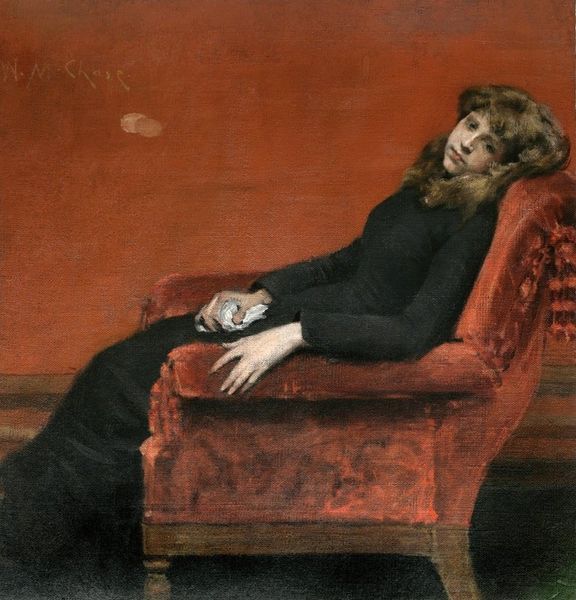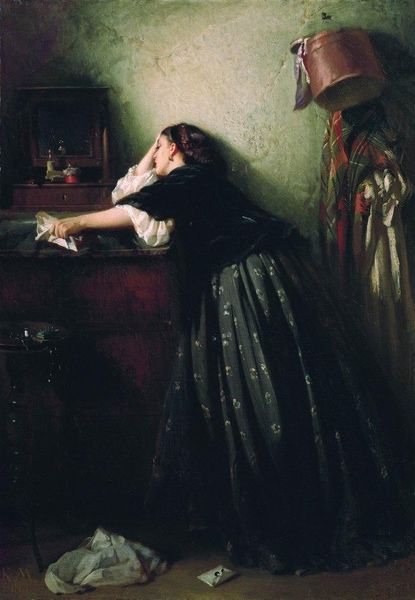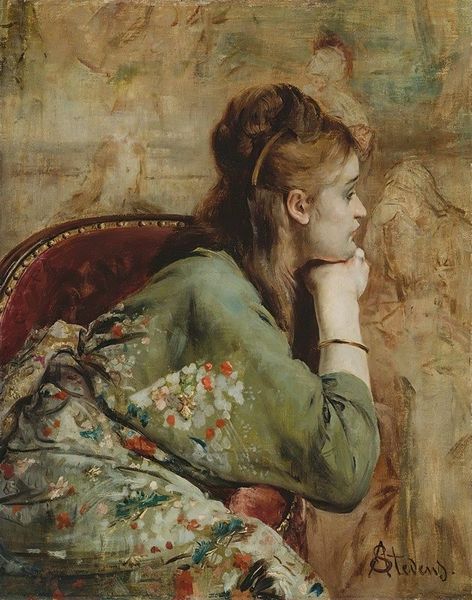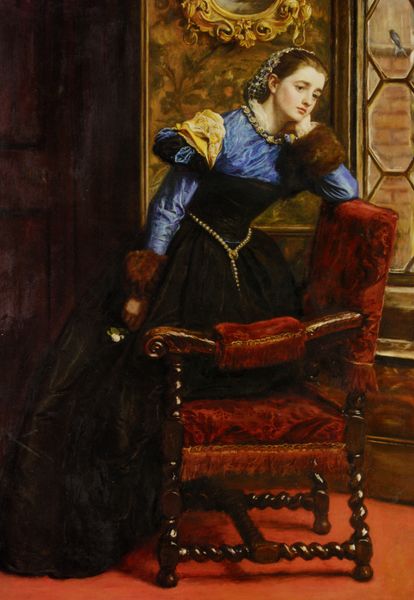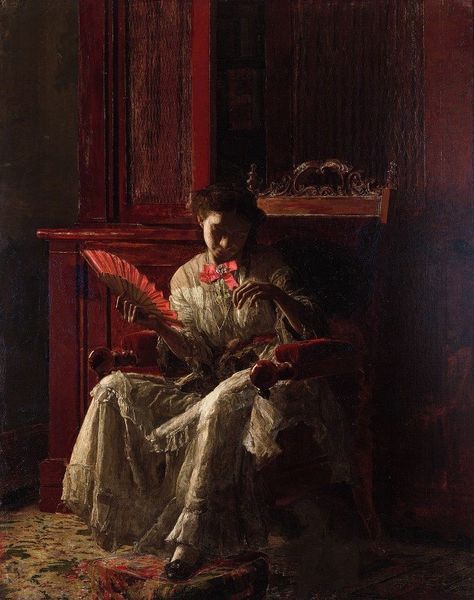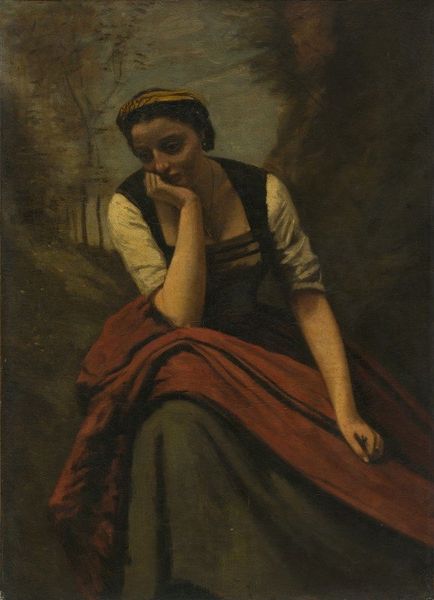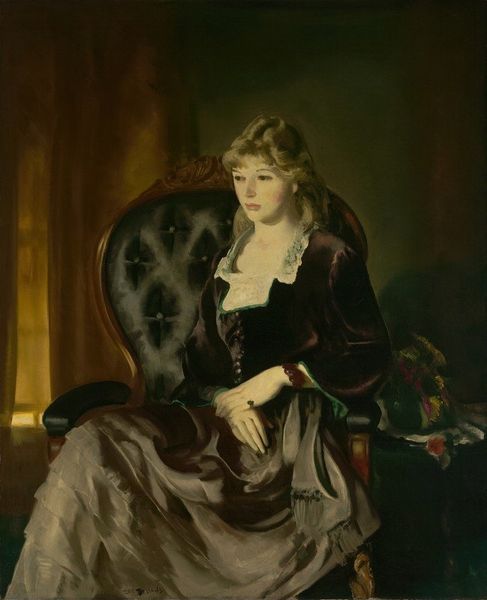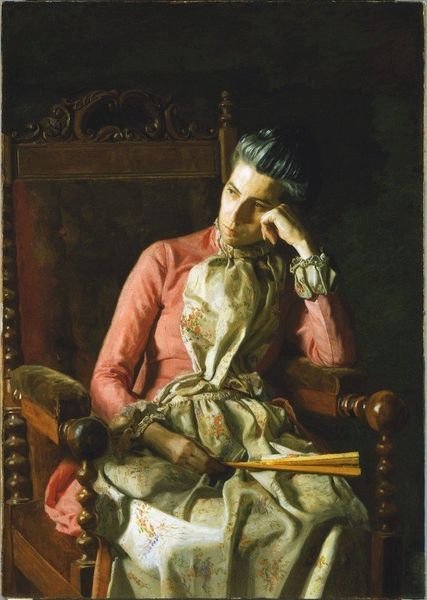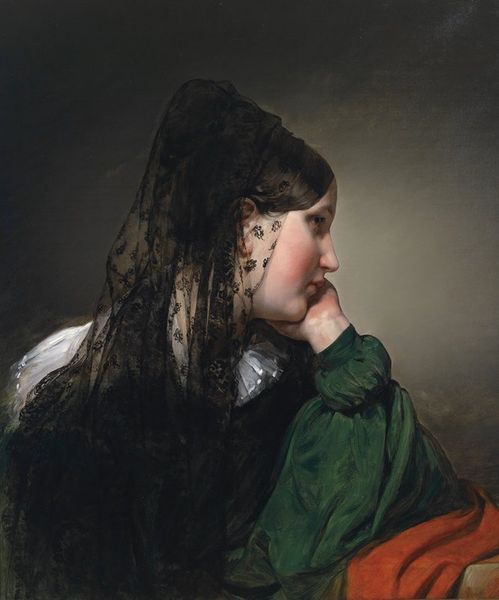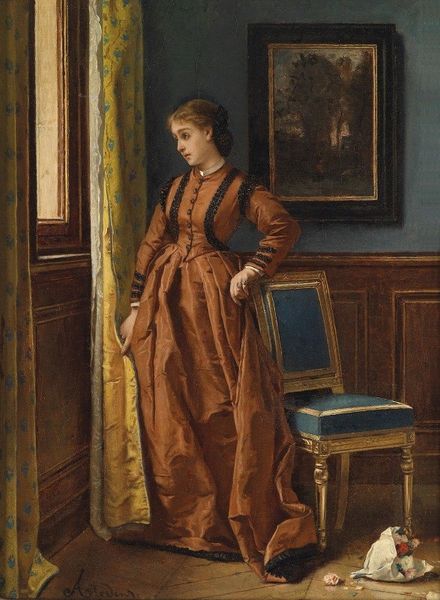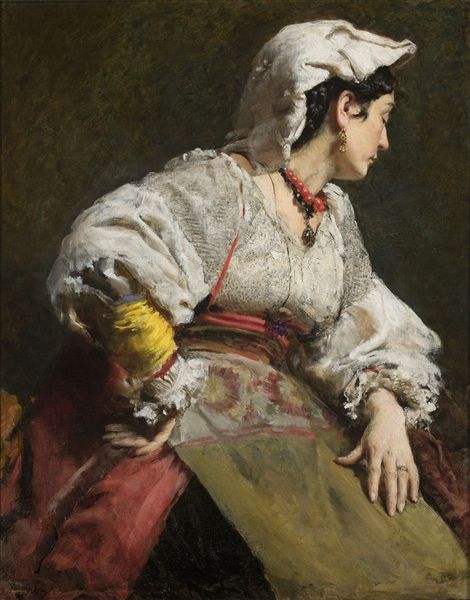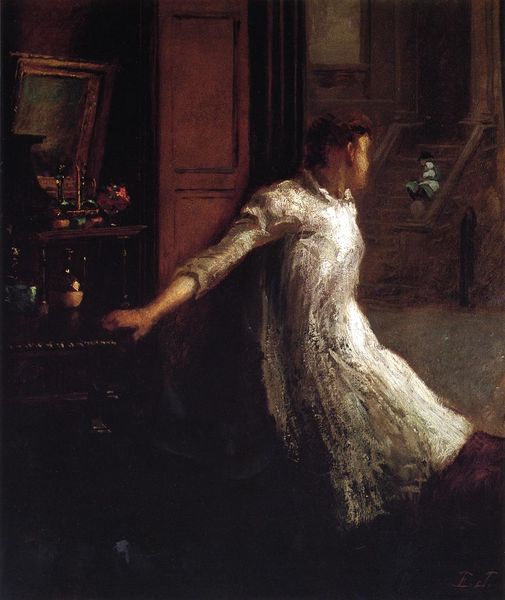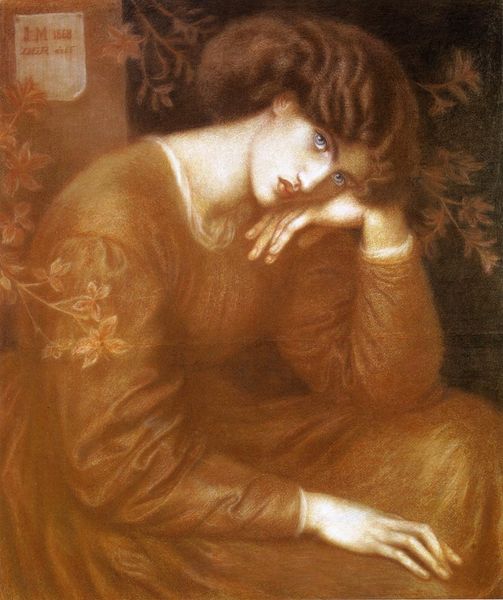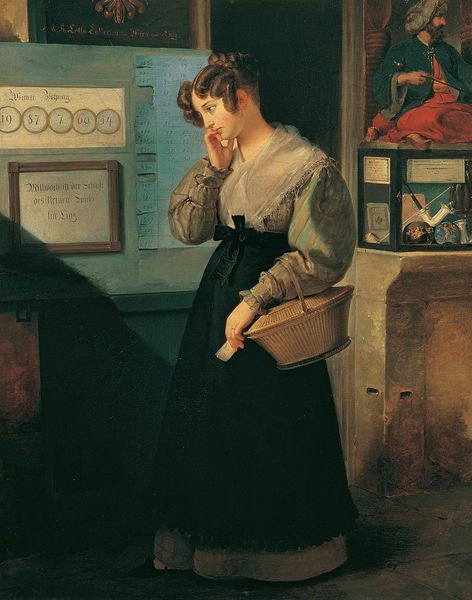
Copyright: Public Domain: Artvee
Curator: This oil on canvas, entitled "At the Railway Station," was painted around 1874 by Alfred Stevens. The scene depicts a woman seated in what seems to be a waiting room. Editor: My first thought is melancholic. The dark palette and the woman's posture suggest a deep pensiveness. The little dog offers a touch of warmth but can't quite dispel the somber mood. Curator: I agree. Let's consider this through the lens of the changing social roles of women in the late 19th century. Travel, especially solo travel, offered women a new form of autonomy. Was she traveling independently, perhaps leaving behind the constraints of domestic life? Or perhaps she has been abandoned and she's on her own because nobody loves her. Editor: The dog itself could be seen as a status symbol but beyond that, it seems symbolic of loyalty. Even though she seems heartbroken, that dog is not leaving her. Perhaps suggesting that love isn't really gone but lives with our faithful companion, like so many other symbols for relationships lost or forgotten. The train schedule in the background reinforces the sense of fleeting moments and departure. I wonder if she is departing... or waiting. Curator: Precisely! And notice the details of her attire. A plush traveling cloak, perhaps expensive, but also hinting at protection, of cloaking of true emotions... However, her ungloved hand and the fact she dabbing her brow suggest vulnerability. The railway station, then, becomes a liminal space for exploring feminine identity—between private emotion and public presentation, between constraint and agency. Her entire appearance gives clues for why this type of work of art will bring an influx of feminist interpretations during that decade and forward. Editor: A poignant observation. What I find fascinating is the continuity of such imagery. Think of other images in the modern world. Someone in tears alone or with an animal... It triggers a similar feeling, tapping into centuries of shared experience and codified symbols surrounding travel and parting. Maybe in her is this strong, emotional bond of home, of connection... which she feels the disconnection or potential of loss. Curator: Ultimately, the power of the work lies in its ambiguity, resisting simple categorization. Editor: Exactly. An enigma. What else can truly hold an emotion beyond a face and form? A painting, a sculpture—art persists when feelings leave.
Comments
No comments
Be the first to comment and join the conversation on the ultimate creative platform.
